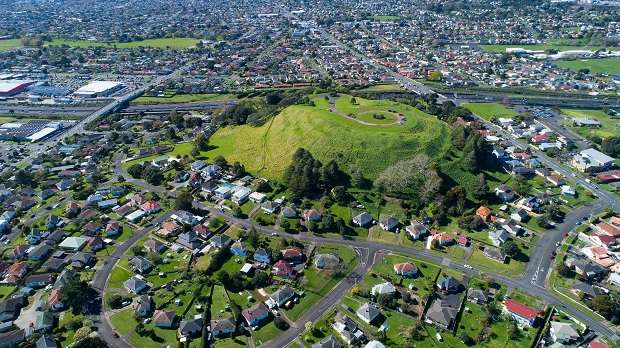Move over dreary suburbs. More desirable master-planned communities like Hobsonville are on their way all over Auckland and further afield.
Few Aucklanders could have missed the mass removal of 1930s-style standalone State homes from suburbs all over the Tāmaki Makaurau.
They’re being replaced with large-scale regeneration and development programmes in suburbs such as Northcote, Roskill South, Ōwairaka, Hobsonville, Tamaki and Mangere, replacing vast swathes of old, cold, run-down State homes.
Kāinga Ora’s master-planned suburbs are the largest urban regeneration ever undertaken in New Zealand and isn’t about packing as many people in per square metre as possible. The master plan is to create a new suburb for life on underutilised land.
Start your property search
The new communities will offer warm, dry homes and improved amenities, better public spaces and infrastructure for many thousands of households. They’re more than just housing developments, having been planned from the top down with attention paid to detail that developers might see as expensive annoyances.
Bill McKay, senior lecturer in Architecture and Planning at the University of Auckland, compares the different approach of government-led master-planned communities with those developed for profit. “What is the government's fundamental reason for doing it? It’s to house people and build communities,” says McKay. “What is [the] developers' fundamental reason for doing it? That's to make money.”

Around 2000 old, State homes will be replaced with brand-new homes in suburbs like Auckland's Roskill South. Photo / Supplied
Unlike the old days when new suburbs were designed with mostly young families in mind, master-planned communities 2020s style are a suburb for life, with a range of housing for young, old, public and private. They’re designed for good living, not simply profit. In short a suburb for life with lifestyle choices.
The point of master planning is that it makes a suburb an awesome place to live, says Boyd Barber, senior urban designer at Kāinga Ora. Working on the design of a master-planned community allows Barber to consider every aspect of what goes into a successful neighbourhood. “By master-planning a community we can (look) 10 years ahead. What this community will look like in 10 years (to) make sure that it really works well.
“We're looking at increasing the population, which requires additional design requirements and guidance to make sure that we're doing density well,” says Barber. Some of the most obvious changes from old-style developments are in the public spaces and realm, says Barber.
The government housing agency may be behind the communities, but they’re not just for State tenants. Each community has mixed tenure. The Northcote master plan, for example, includes apartments, terrace homes and standalone, with around one third being State tenants and the other two thirds private homes/rentals.
In Northcote, the master plan replaces 370 old State homes with 1500 new homes on the same land. The technical design goes well beyond the home and includes three new pocket parks as well as renovating the four existing parks to become more usable and fun. The design includes leafy parkways built for the community to walk or cycle on. The streets are being renewed, upgraded, and made safer. And with such a large development, public transport can be rerouted to where it’s needed.
The diversity that comes with increased density and mixing public with private tenure makes it more enjoyable to live in, says Barber.
According to McKay, people shouldn't turn their noses up at living beside State tenants. He bought a house in a mixed-use street in Ponsonby and his State-tenant neighbours are valued members of the community.
Key to master planning is the idea of “mixed use”, he says. Older planned suburbs like Manurewa were, when developed in the 1960s, designed to be purely residential. You had to get in a bus, car or taxi to go to the shops, says McKay. In a master-planned community, you can expect to find the amenities you need around the corner.
When moving into developer-led suburbs, you have to think through how far away amenities such as schools, bus stops and chemists are from your home, says McKay. “Whereas the public master plans are thinking through all of those things. It’s like living in a real suburb,” he says.
Density is growing on New Zealanders. While some may turn their noses up at medium density housing, these new homes are better designed and make perfect sense for different generations, says Barber. First-home buyers might enjoy the view of the tui in trees from their third-floor home or, if you’re slightly older, that you know having a ground floor apartment could be a really good way to maintain your independence.
It makes sense, says Barber, to use Kāinga Ora’s landholdings more efficiently. “This is a really unique opportunity to refresh neighbourhoods, and change the perception of these suburbs. They're really well located and can be really, really amazing.”
- This content was created in partnership with Kāinga Ora








